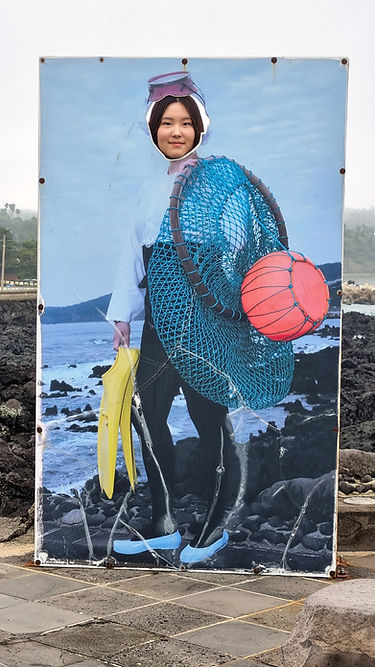Rayne Seobin Lee
My Story

My family and I moved to Jeju Island 6 years ago for my mother’s recuperation from cancer. Here, I lived both as a foreigner from Seoul city, the capital of South Korea, and as a resident with a passion for uncovering the charming secrets hidden between the rocks of this rather peculiar island.
During the past several years of my living on Jeju Island, I have explored and advocated the uniqueness of Jeju and its veiled treasures, from the tiny spiders that made their home in lava caves to the genuine narratives of the local women who have spent their entire lives on the island.
After a while, however, I realized that there was a significant gap between the locals of Jeju Island and the students of international schools in many ways. Despite living on the same island, the two groups were very much disconnected from one another, with very scarce opportunities to share what they had and learn from each other. To bridge the gap between these two communities, I encouraged the students of the international school to provide learning opportunities to the local children of Jeju Island in cooperation with the Jeju Aerospace Museum. Moreover, I led an interview team to introduce the culturally genuine narratives and perspectives of the Jeju indigenous people to the students and staff of international schools through the Jeju Testimonial Theatre Exhibitions hosted by my school.
I first stumbled upon the topic of Neokdeulim while I was exploring ways to psychologically support the families of patients at Jeju Trauma Center, a regional emergency trauma centre where I was shadowing doctors. During this period, I had the chance to meet the patients and their families suffering from not only physical trauma but also mental trauma due to a sudden misfortune. Having gone through a similar experience of watching my mom walk the tightrope between life and death because of her cancer, I was once again reminded of how important psychological support systems are in psychological and physical recuperation. I was instantly mesmerized by the uniqueness and unfamiliarity of ‘Neokdeulim,’ and with my pre-existing interest in Jeju culture and psychological remedies, I decided to go on my own odyssey around the island to meet with the locals of Jeju and listen to their authentic experiences of the ritual.
Throughout my self-proclaimed expedition, I traversed the unvisited corners of Jeju, interviewing the indigenous people of Jeju who lived along the coastline. I conducted a total of twenty interviews at seventeen different locations and heard the stories of twenty different people. Among the twenty interviewees, seventeen were the female divers of Jeju called ‘Haenyeo’s and the remaining three were indigenous male adults who wanted to share their stories of ‘Neokdeulim.’
My odyssey to learn about ‘Neokdeulim’ was an awe-inspiring one that allowed me to immerse myself fully into the lives of the indigenous people of Jeju. Listening to the stories of the Haenyeos was especially inspiring, as they were often the very people who lived on the island from birth and went through all the hardships the people of Jeju had to go through. As such, they were also the ones who knew most about the traditional ritual of ‘Neokdeulim.’ Their stories led me to profound insights into their unique culture of ‘Neokdeulim’ and the stories of each village and Jeju Island.
I founded “Lemon Juice Book”, a brand promoting cultural awareness to share knowledge about Jeju and its hidden local cultures.
When you add heat to the papers in a book written with lemon juice, the words become visible. It is an old method of writing secret notes that uses the chemical properties of citric acid in lemon. Once you add heat to the paper, the water in the acid evaporates, leaving only black carbon behind.
“Culture” is like a book written in lemon juice. At first glance, the words in the book are invisible. However, once you open up yourself to the stories within and bring your warmth to the illegible letters, the tales inside will reveal themselves to you and beyond. The hidden cultures that permeate the lives of many can be read and reread with care and attention.